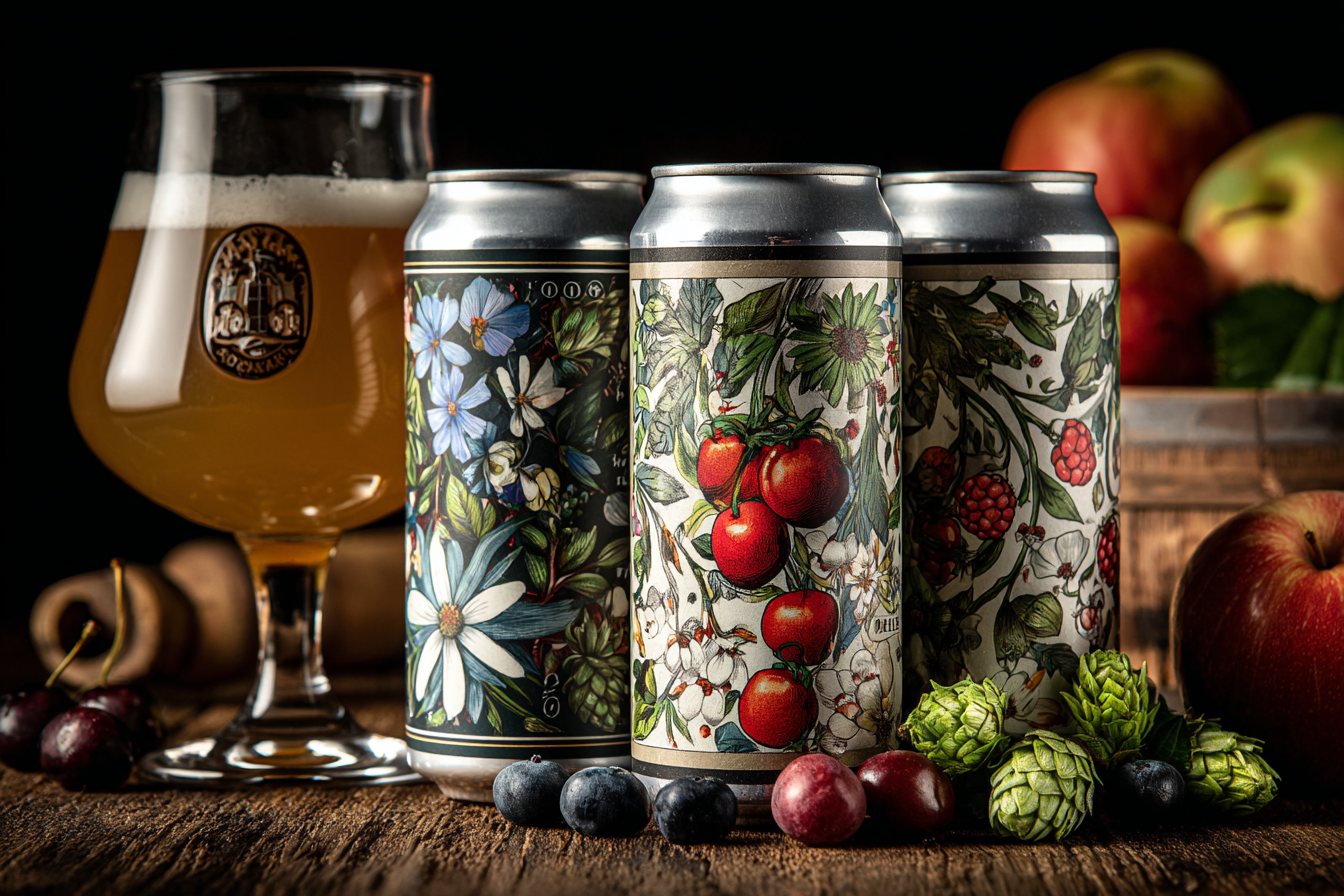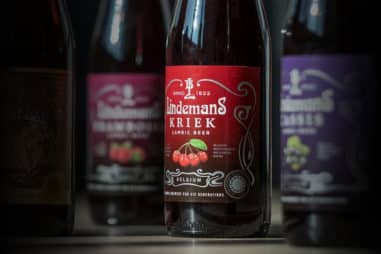Fruit IPAs have captured the hearts of beer enthusiasts around the world, combining the classic bitterness of India Pale Ales with the bright, juicy flavors of fruit. This fusion creates a refreshing and often complex beer experience that pushes the boundaries of traditional brewing. But how did fruit IPAs come to be, and what is the story behind this innovative style? Let’s dive into the fascinating journey of Fruit IPA, exploring its origins, evolution, and future in the craft beer landscape.
Origins of IPA Beer Style
The history of Fruit IPA begins with the origins of IPA itself. India Pale Ale was first brewed in the late 18th century in England. The beer was designed to withstand the long sea voyage from Britain to India, its primary market during the British Raj. Brewers increased the hops and alcohol content to act as natural preservatives, resulting in a beer that was more robust and bitter than other ales of the time.
This traditional IPA had a strong, bitter profile dominated by floral, piney, and citrusy hops. It was distinct and flavorful, but fruit was not part of the equation. The IPA was purely a showcase of hops and malt, with an emphasis on bitterness and drinkability.
Early Experiments with Fruit in Beer
While IPAs traditionally didn’t feature fruit, brewing with fruit has its own rich history. Belgian brewers, for example, had been blending fruit with beer centuries earlier to create lambics and other fruit beers that emphasized sourness and complexity.
The experimentation of combining fruit and hops on a larger scale in the IPA category started more prominently in the late 20th and early 21st centuries. Some adventurous brewers began adding fruit to hoppy ales to soften the bitterness or add unique flavor twists. Early fruit additions ranged from traditional fruits like cherries and raspberries to tropical varieties.
These early experiments were not yet mainstream but planted the seeds for the Fruit IPA trend by showing that hops and fruit could coexist harmoniously, with fruit complementing rather than overpowering the hoppy backbone.
Rise of Fruit IPAs in Craft Brewing
The craft beer movement of the 1990s and 2000s fueled innovation and experimentation in brewing. As IPA surged in popularity among craft beer fans, brewers began pushing boundaries on styles and ingredients. Fruit IPAs started to emerge as a result of this creative spirit, blending the bold bitterness of hops with the juicy sweetness or tartness from fruit.
By the 2010s, Fruit IPAs began gaining traction in markets hungry for new flavors that contrasted with the dominant piney and resinous profiles of many IPAs. Craft breweries across the United States and globally started releasing versions featuring fruits like mango, passionfruit, grapefruit, and more. These beers added fresh aromas and subtle sweetness that balanced the bitterness, making IPAs more accessible to a wider range of palates.
Key Breweries and Milestones
Several breweries were instrumental in popularizing Fruit IPAs, showcasing how fruit could elevate and innovate the IPA style. Notable examples include:
- Dogfish Head Brewery: Known for creative brews, Dogfish Head experimented early with fruit-hopped beers that helped introduce mainstream drinkers to the concept.
- Ballast Point Brewing Company: Their passionfruit-infused IPAs played a major role in popularizing tropical fruit IPAs in the craft scene.
- Other Half Brewing: A New York brewery recognized for their juicy, hazy Fruit IPAs featuring abundant fruit additions and bold hop profiles.
These breweries and more pushed both the flavor boundaries and the popularity of Fruit IPAs, leading to festivals, collaborations, and dedicated fanbases focused on this evolving style.
Evolution of Popular Fruit Choices
The types of fruit included in IPAs have evolved as brewers experimented with what worked best with hops. Early fruit IPAs often included classic additions like cherries, raspberries, and blueberries, which brought tartness and a touch of sweetness.
As the style matured, tropical fruits like mango, passionfruit, pineapple, and guava became increasingly popular. These fruits complement the citrusy hop profiles often used in IPAs, creating bright and refreshing flavor combinations that are juicy without being overly sweet.
More recently, some brewers have incorporated less traditional fruits such as blood orange, dragonfruit, and even stone fruits like peach and apricot for unique spins on the style. The use of fruit peel, zest, and even fruit extracts has extended the creative possibilities, allowing brewers to fine-tune aroma and flavor.
How Consumer Tastes Shaped the Style
Consumer preferences have had a significant impact on the direction of Fruit IPA development. The craft beer audience has grown more adventurous, seeking out bold and dynamic flavor profiles. The demand for fruity notes in beer reflects a broader trend toward more diverse and experimental beverage options.
Many beer drinkers who found traditional IPAs too bitter or harsh appreciate the balancing effect fruit provides. It creates a smoother, juicier experience that can appeal to those newer to hoppy beers as well as seasoned aficionados looking for something different.
Social media and beer rating platforms have also helped showcase innovative Fruit IPAs, amplifying their popularity and encouraging breweries to keep innovating. Positive consumer feedback and strong sales have driven continual experimentation with fruit varieties and brewing techniques.
Future of Fruit IPA Innovation
Looking ahead, the future of Fruit IPA looks ripe with possibilities. As brewing technology advances and consumer creativity grows, the style will likely continue to evolve in exciting ways:
- New Fruit Pairings: Expect to see more unusual and exotic fruits incorporated into IPAs to surprise drinkers with novel flavors.
- Refined Techniques: Brewers will refine how they add fruit, experimenting with raw fruit, purees, extracts, and dry hopping with fruit adjuncts to optimize balance.
- Sustainability: Sourcing locally grown and seasonal fruits could become more common, aligning with growing interest in sustainability in the craft brewing industry.
- Hybrid Styles: The lines between Fruit IPAs and other styles might blur as fruit is incorporated into hazy IPAs, double IPAs, sour IPAs, and more, expanding the style’s range.
This ongoing innovation ensures that the Fruit IPA category will remain a dynamic and flavorful part of craft beer culture.
Bringing It All Together
The history of Fruit IPA is a story of tradition meeting innovation. Starting from the classic British IPA designed to survive long voyages, the style has transformed dramatically with the craft beer revolution’s spirit of experimentation. Early fruit additions paved the way for an entire subgenre that marries the bitterness and hop character of IPAs with the juicy, aromatic, and refreshing qualities of fruit.
Breweries and consumers alike have embraced Fruit IPAs for their unique balance, creativity, and appeal. With evolving fruit varieties, improved brewing techniques, and a growing, adventurous audience, Fruit IPAs are set to remain a beloved and exciting style for years to come. Whether you prefer the subtle hint of berry, the bright burst of tropical fruit, or a bold fusion of both, Fruit IPAs offer something deliciously different and always refreshing.







